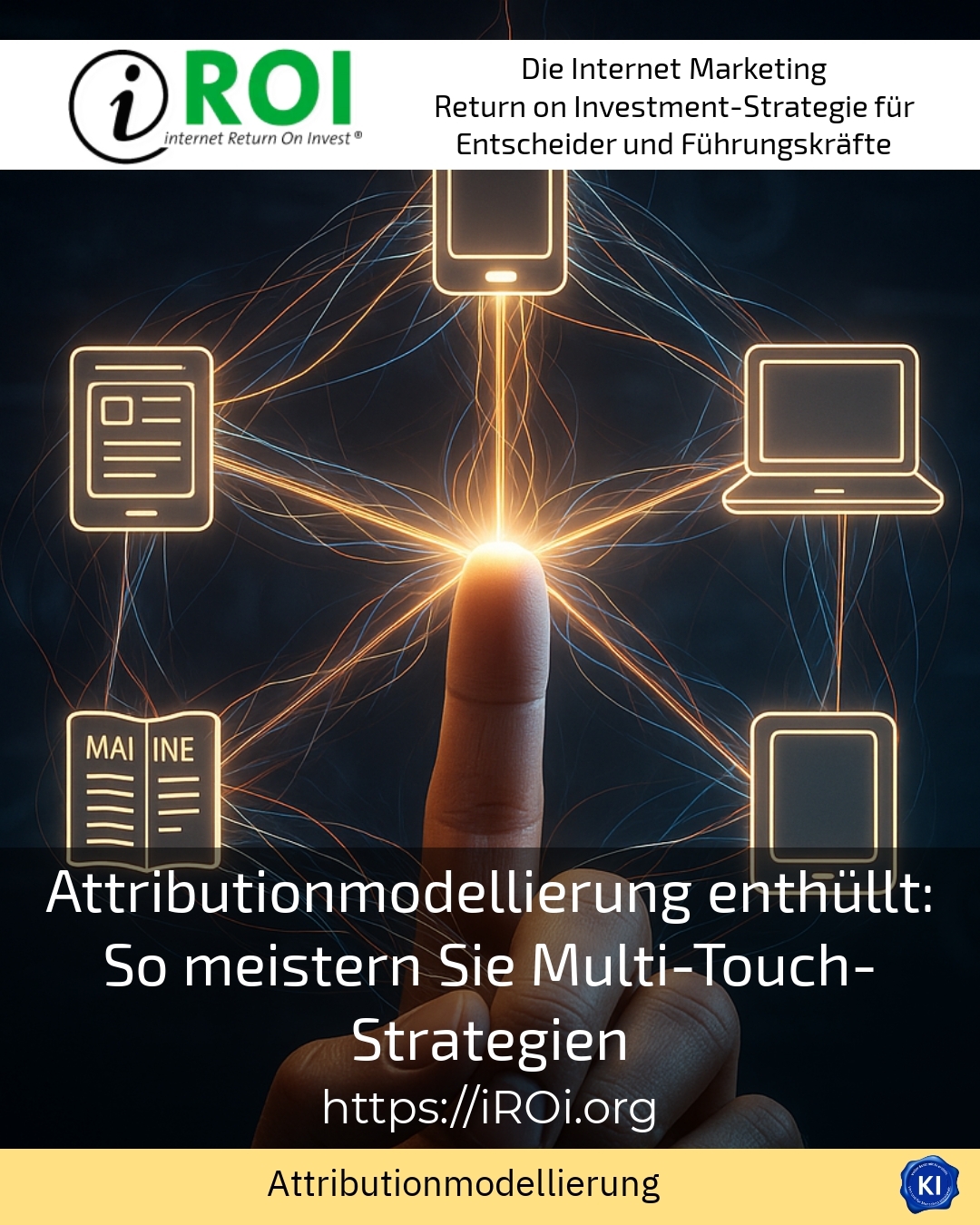The modern marketing world is complex. Companies rely on a variety of channels to reach customers. But how can the actual contribution of individual measures be measured? This is where attribution modelling comes into play. It makes it possible to recognise the value of different touchpoints along the customer journey. This gives marketing managers clear impulses as to where budgets can be utilised sensibly. Attribution modelling helps to increase the effectiveness of campaigns and optimise the return on investment.
Why attribution modelling is indispensable today
Many companies ask themselves which channels really contribute to success. Clients often report that after a campaign they do not know exactly whether email marketing, social media or search engine advertising was the decisive factor. Attribution modelling provides clarity here. It analyses how different touchpoints interact and what role they play in the conversion.
An example: A customer first sees an advert on social media. Later, he clicks on a Google advert and finally visits the website directly. Without attribution modelling, it would be difficult to evaluate the influence of each channel. With the right method, the shares can be clearly allocated.
Attribution modelling is also relevant in the B2B sector. Here, decisions are often made across several touchpoints. A customer reads a blog article, attends a webinar and then receives a personalised email. Each of these steps contributes to the conclusion. Attribution modelling helps to quantify and understand these steps.
How attribution modelling works in practice
Examples from practice
An online shop uses various channels: social media, email marketing and search engine advertising. A customer first sees a sponsored post, later clicks on a Google advert and finally makes a purchase via organic search. Attribution modelling shows that all three channels have made a contribution. This allows the company to allocate the budget in a targeted manner.
Another example: A manufacturer of software solutions relies on webinars, blog posts and LinkedIn campaigns. A prospective customer reads a blog article, attends a webinar and then signs up for a demo. Attribution modelling helps to measure the influence of each channel and adapt the strategy.
A third example: A service provider uses retargeting, email marketing and content marketing. A customer sees an advert, receives a newsletter and reads a blog article. Finally, he books a consultation. Attribution modelling shows how the individual channels interact and where there is potential for optimisation.
BEST PRACTICE with one customer (name hidden due to NDA contract)
BEST PRACTICE with one customer (name hidden due to NDA contract) and then the example with at least 50 words.
An international e-commerce provider initially only used the last-click model. This meant that many channels were underestimated. With the introduction of attribution modelling, the company was able to recognise that social media and content marketing make a significant contribution. The budget allocation was adjusted. The conversion rate increased significantly. Attribution modelling helped to better understand the customer journey and optimise the marketing strategy.
What models are available?
There are various models for attribution modelling. The last-click model gives full value to the last touchpoint. The first-click model rewards the first contact. Linear attribution distributes the value evenly across all touchpoints. The time decay model gives more weight to more recent contacts.
The choice of model depends on the objectives and the industry. In the B2B sector, linear attribution often makes sense. In the B2C sector, the time decay model may be more suitable. Attribution modelling makes it possible to select the appropriate model and interpret the results.
Another example: One company uses the time decay model because the decision is often made shortly before the purchase. Another company uses linear attribution because all channels are equally important. Attribution modelling helps to find the right model and adapt the strategy.
iROI coaching as support for attribution modelling
iROI-Coaching supports companies in attribution modelling projects. We provide support in selecting the appropriate models and interpreting the results. Clients often report that they have a better overview of their marketing channels after the coaching. Attribution modelling thus becomes a valuable tool for strategic decision-making.
Our support includes analysing the customer journey, selecting the right model and implementing it in practice. We provide ideas on how the results can be used to optimise the marketing strategy. Attribution modelling thus becomes an integral part of the marketing process.
An example: A customer initially only used the last-click model. With our support, attribution modelling was introduced. The results showed that content marketing and social media were making a significant contribution. The budget allocation was adjusted. The conversion rate increased significantly. Attribution modelling helped to better understand the customer journey and optimise the marketing strategy.
My analysis
Attribution modelling is a key tool for modern marketing strategies. It makes it possible to measure the value of different channels and optimise budget allocation. Clients often report that they have a better overview of their marketing channels after implementing attribution modelling. Attribution modelling helps to better understand the customer journey and adapt the marketing strategy. With the right support, attribution modelling becomes a valuable tool for strategic decision-making.
Further links from the text above:
Attribution models in online marketing
Attribution model definition & examples
What is attribution modelling?
Attribution modelling explained simply
Attribution models in online marketing: a guide
Marketing attribution: definition and the various models
Marketing attribution - models and best practices
Attribution: Evaluate marketing touchpoints & optimise budget
For more information and if you have any questions, please contact Contact us or read more blog posts on the topic internet Return on Investment - Marketing here.
















